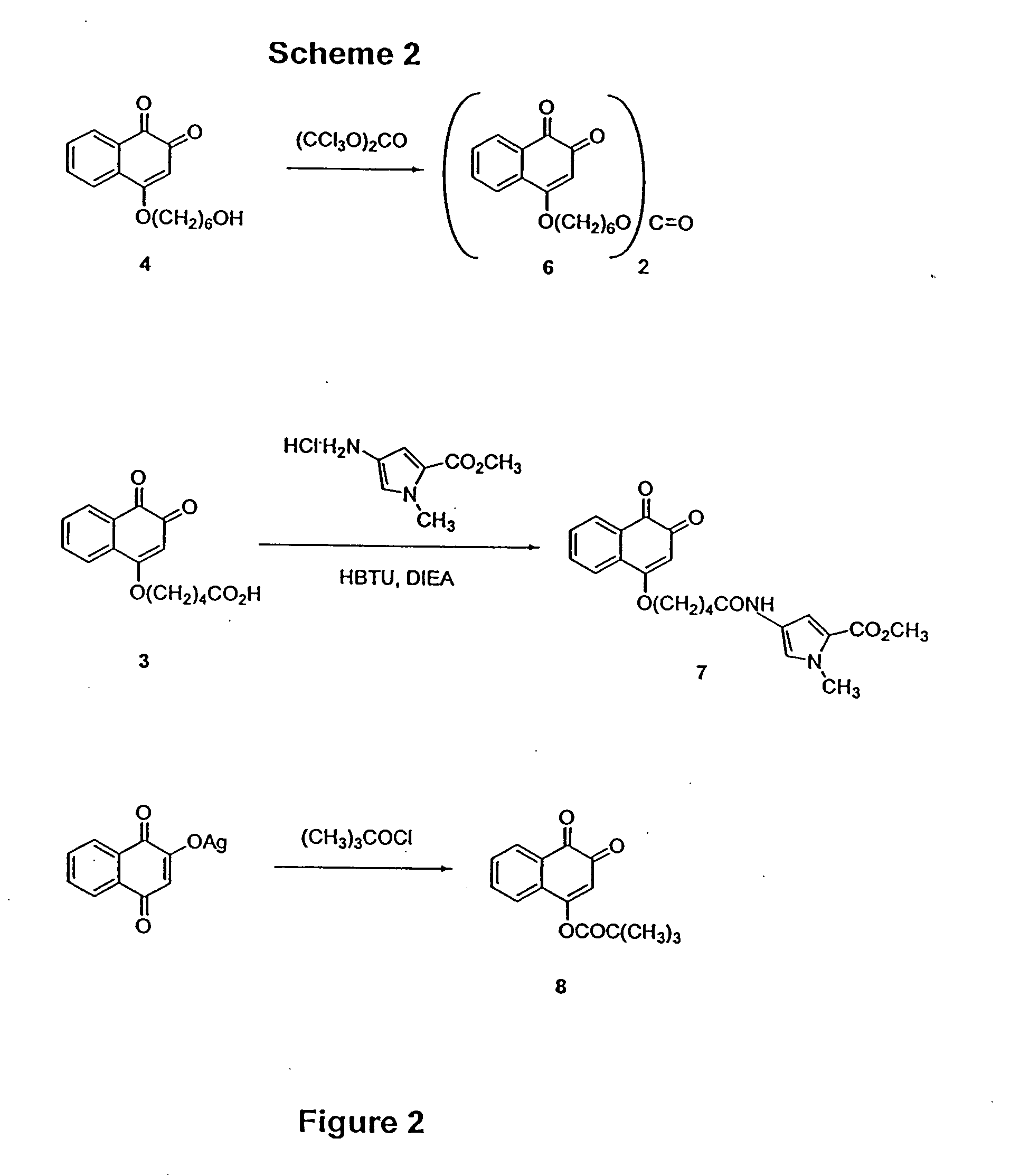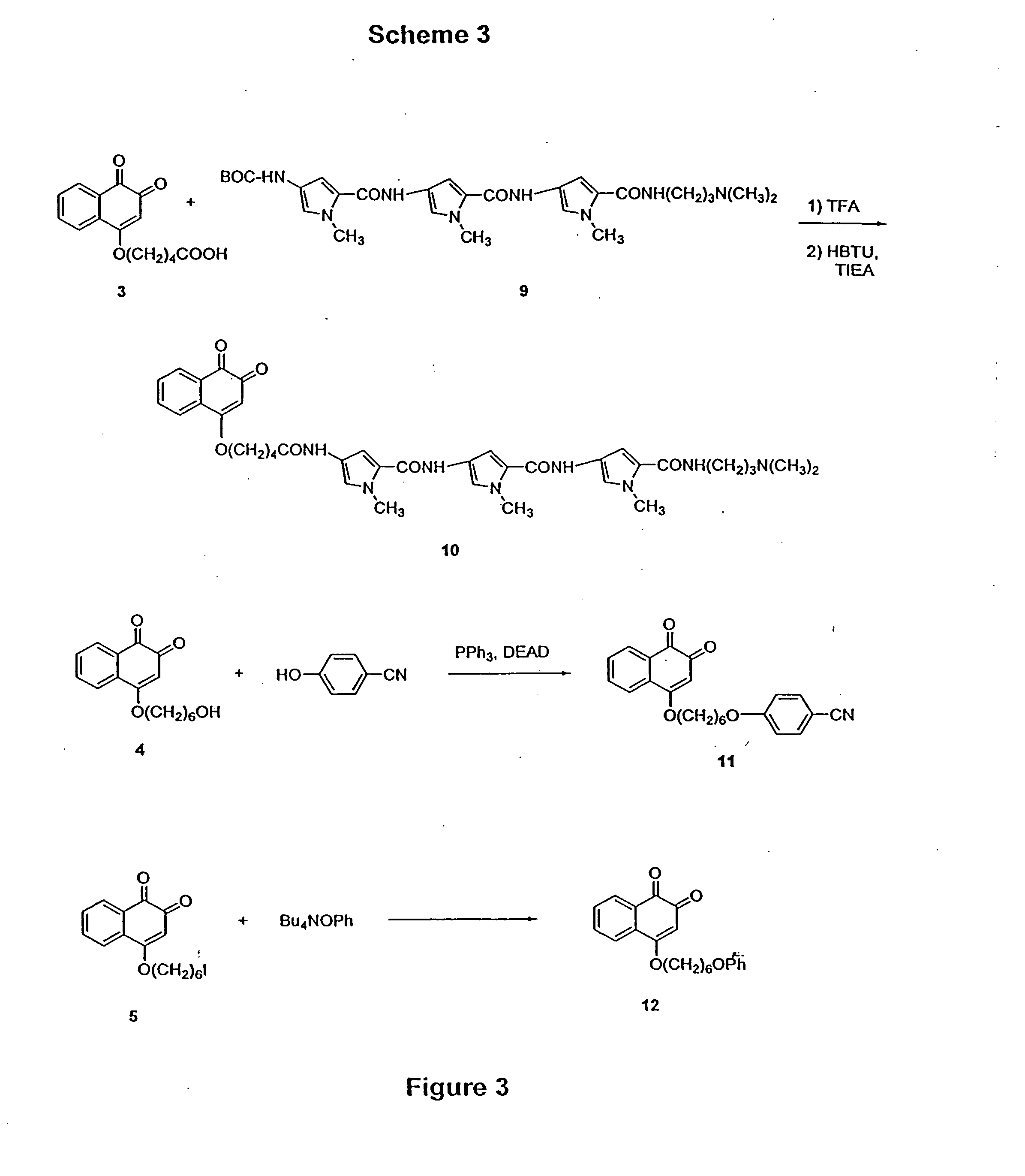Novel quinones as disease therapies
a technology of quinones and quinones, applied in the field of new quinones, can solve problems such as quinone bioactivation and toxicity
- Summary
- Abstract
- Description
- Claims
- Application Information
AI Technical Summary
Benefits of technology
Problems solved by technology
Method used
Image
Examples
example 1
Synthetic Preparation of Quinone Compounds
Preparation of quinones of the invention is described below and depicted in the Figures.
New chemistry was developed in order to construct drugs where the 1,2-naphthoquinone moiety is bound to a DNA minor groove binder unit or a DNA intercalator. While not wishing to limit the invention to any particular theory of operation, it is believed that the 1,2-naphthoquinone derivatives “poison” topoisomerase II and transform this essential DNA replication enzyme into a nuclease-type enzyme that cleaves DNA. It is postulated that this modification of topoisomerase II by the 1,2-naphthoquinones is very likely due to the alkylation of the thiol residues of the enzyme by the quinones (Michael additions).
Scheme 1 outlines derivatization reactions leading to 1,2-naphthoquinone intermediates. The silver salt of 2-hydroxy-1,4-naphthoquinone was alkylated with the tert-butyl or benzyl esters of 5-bromo-pentanoic acid to give either 1 or 2. The benzyl e...
example 2
Cell Culture and Drug Testing Protocol
Cell Culture: The human lung adenocarcinoma cell line, A549, and human prostatic cancer cell line, DUPRO, were a gift from Dr. M. Eileen Dolan, University of Chicago, Department of Medicine. A549 was grown in Ham's F-12K medium (Fisher Scientific, Itasca, Ill.) supplemented with 10% fetal bovine serum and 2 mM L-glutamine. DUPRO was grown in RPMI-1640 supplemented with 10% fetal bovine serum. The human colon carcinoma cell line, HT29, and the human breast carcinoma cell line, MCF7, were obtained from the American Type Culture Collection, Rockville, Md. HT29 cells were grown in McCoy's 5A medium (Gibco, BRL, Gaithersburg, Md.) supplemented with 10% fetal bovine serum. MCF7 cells were grown in Richter's Improved Modified Eagle's medium supplemented with 10% fetal bovine serum and 2.2 g / L sodium bicarbonate. The human prostate adenocarcinoma cell lines, LNCAP, PC-3 and DU145, were gifts from Dr. George Wilding, University of Wisconsin Comprehensi...
PUM
 Login to View More
Login to View More Abstract
Description
Claims
Application Information
 Login to View More
Login to View More - R&D
- Intellectual Property
- Life Sciences
- Materials
- Tech Scout
- Unparalleled Data Quality
- Higher Quality Content
- 60% Fewer Hallucinations
Browse by: Latest US Patents, China's latest patents, Technical Efficacy Thesaurus, Application Domain, Technology Topic, Popular Technical Reports.
© 2025 PatSnap. All rights reserved.Legal|Privacy policy|Modern Slavery Act Transparency Statement|Sitemap|About US| Contact US: help@patsnap.com



